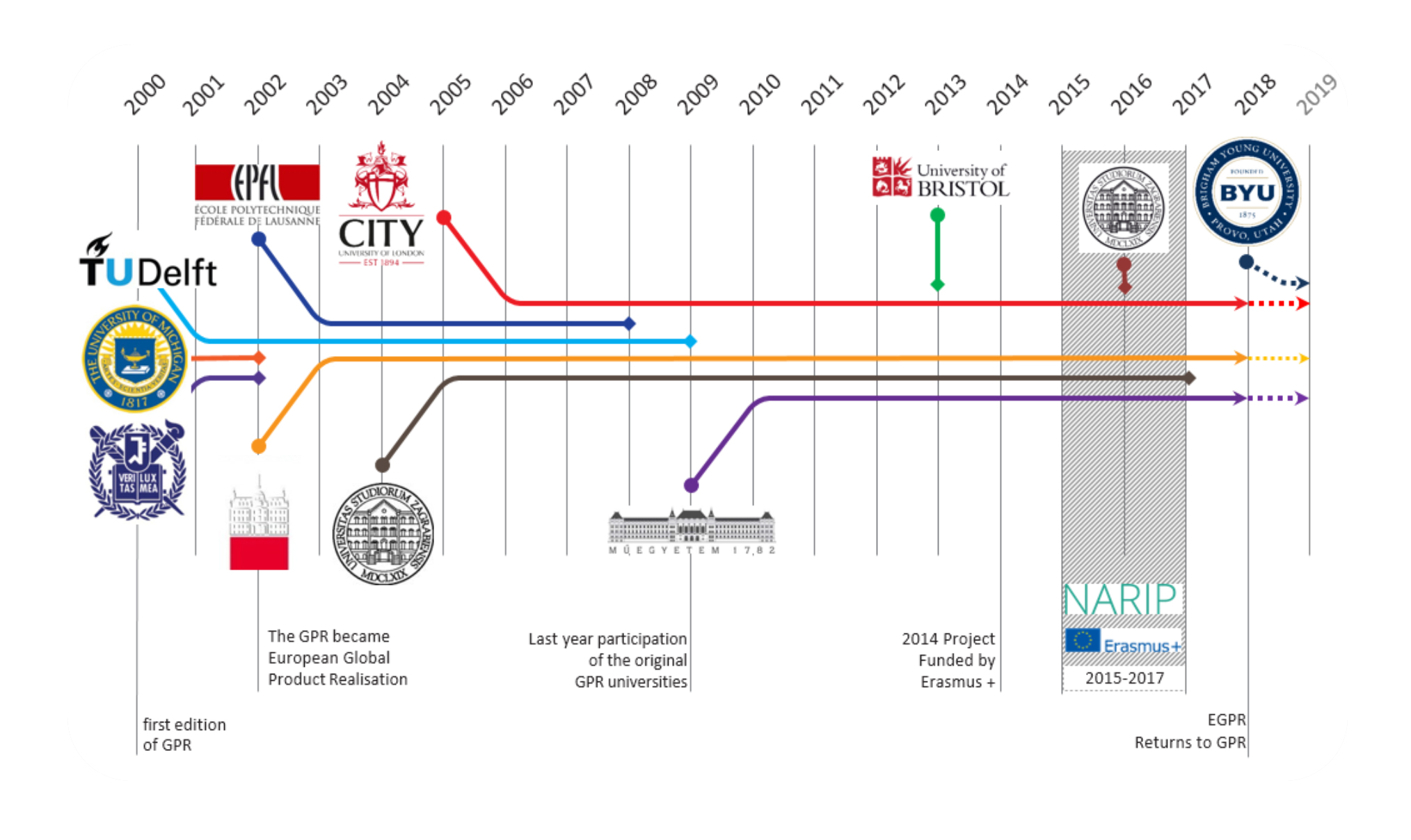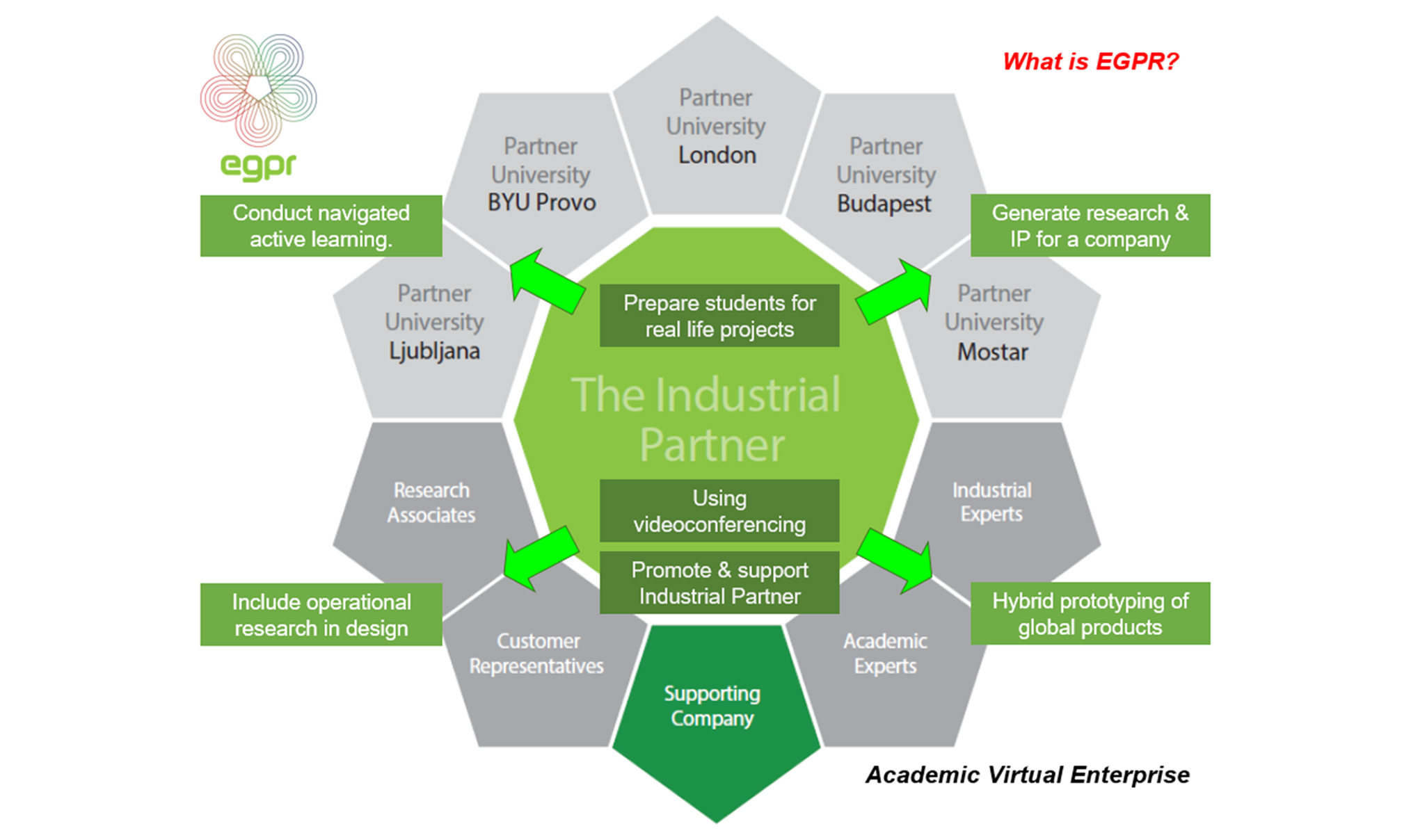EUROPEAN GLOBAL PRODUCT REALISATION: CREATIVITY AND INNOVATION IN EDUCATING ENGINEERS AND PRODUCT DESIGNERS OF 21ST CENTURY
By Professor Ahmed Kovacevic, Howden Chair in Engineering Design and Compressor Technology, City, University of London
COllaborative DEsign in Virtual Environment (CODEVE) is a teaching methodology developed within the European Global Product Realization (EGPR) course over a number of years at City, University of London
Today’s manufactured products are global and our students engage in their early professional practice facing challenges of working within distributed organisations and developing global products.
The European Global Product Realisation course was initiated at the dawn of the 21st Century and involves a collaboration between several European Universities.
Each year, an Academic Virtual Enterprise of participating Universities and an Industrial Partner is formed in which students are distributed in international teams formed from multiple partner Universities.
Educational activities and project tasks are primarily communicated through video-conferencing and other synchronous and asynchronous means of communication.
The CODEVE methodology was tested on projects which include the design of consumer products, service driven products and industrial machinery. The evaluation of the methodology was supported by the Erasmus+ funded project called Networked Activities for Realization of Innovative Products (NARIP) from 2015-2017.
City, University of London joined the project in 2005 and has played a crucial role in developing this teaching methodology which is now implemented in many courses related to engineering design at several Universities in Europe.
 Figure 1. Timeline showing milestones and University participants in the European Global Product Realisation course
Figure 1. Timeline showing milestones and University participants in the European Global Product Realisation course
The European Global Product Realization course (EGPR) originally started as Global Product Realisation (GPR) by TU Delft, the Netherlands, University of Michigan in the USA and Seoul National University, Korea, in 2000.
It ran for two years but due to lack of tools for distributed synchronous communication and time differences between three continents was converted into a European project in 2002. TU Delft, EPFL Lausanne, and University of Ljubljana joined to form the first project with the Slovenian company NIKO.
Three more universities joined later, namely University of Zagreb in 2003, City, University of London in 2004, and University of Technology and Economics Budapest in 2009.
In 2014, four European universities launched a joint educational project called NARIP (Networked Activities for Realization of Innovative Products). The project was supported by the EU’s ERASMUS+ funding. The history of University participants on the program is shown in Figure 1.
The project goal was to formalise, test and consolidate the methodology for collaborative new product development in a distributed environment by use of virtual tools.
 Figure 2 Academic virtual enterprise of EGPR in 2018
Figure 2 Academic virtual enterprise of EGPR in 2018
In brief, each year participating Universities and an Industrial Partner form an Academic Virtual Enterprise, as shown in the example from year 2018 in Figure 2.
Students are distributed in international teams formed from multiple partner Universities. The main communication of educational activities and project tasks is performed through video-conferencing and other synchronous and asynchronous means of communication.
The design process model applied in CODEVE originates from the model developed by Pahl and Beitz, but is extended and adapted to suit the fuzzy front end of design projects performed in academic virtual enterprises. The extensions are related to creating a vision and implementing design research methodologies at the start of the project, blending phases of embodiment and detail design as well as bringing students for the first time in the final workshop, which is aimed to culminate with the working prototype and public presentations of the products.
The students are encouraged to perform conducted navigated active learning and include operational research in design process. At the end of the project, a hybrid prototype is assembled which often allows demonstration of IP generated for company.
The development of the teaching methodology was named CODEVE (Collaborative Design in Virtual Environment). The objective of the course is to expose students to effective methods in designing innovative products inside a distributed, collaborative, multidisciplinary, multinational and multicultural environment. A wide variety of different projects with industrial partners have enabled a collection of broad and valuable insights and experiences over nearly two decades. The projects are unique each year and come from a variety of industrial sectors.
In 2017, the students’ experiences in realising the NARIP project were summarised to evaluate suitability of the CODEVE teaching methodology for different disciplines and types of projects ranging from industrial design to engineering design.
Tasks to design large industrial devices, like the welding inspection device for nuclear reactors from 2015, require a number of student groups to work on subsystems of a common prototype.
On the other side, consumer products such as 2016’s lighting solutions for aging population and 2017’s lightweight mobility scooter, require each student group to design and manufacture their own prototype.
The first type of project is focused on engineering design while the second one leans towards industrial and product design. It was confirmed that this teaching method was suitable for both and was ready for implementation in European collaborative projects. In 2018, a new partner, Brigham Young University from Provo in Utah, USA joined the EGPR community.
Moreover, that year’s industrial sponsor, Black Diamond, is based in Salt Lake City in Utah, USA and is a leader in outdoor climbing and skiing equipment. The project is hosted by City, University of London, marking the first time in the history of EGPR the partner company and the host university are not from the same country.
www.city.ac.uk
